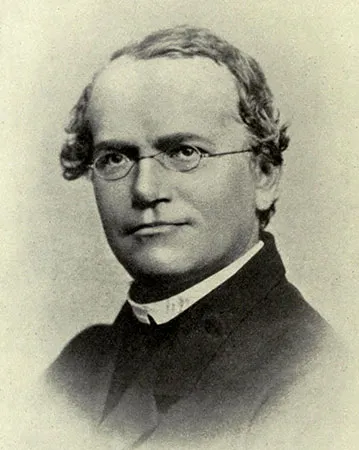Discover how genomics evolved from Mendel’s pea experiments to modern genome sequencing, CRISPR, and precision medicine. Explore the big players shaping genomics today.
Introduction: Why Genomics is One of the Great Stories of Science
Imagine being handed the full instruction manual for life — all the chapters, the footnotes, the cross-references. That’s genomics: not just the study of individual genes, but the entire set of DNA instructions (the genome), how it varies, how it works, and how we can harness it.
In this post, we journey from early genetics to modern genomics, survey the current landscape (with big names and major challenges), and look ahead to what might come next.
Roots: From Heredity to the Molecular Age
1. Mendel and the rediscovery of heredity
Long before the word genomics existed, humans wondered how traits passed from one generation to the next.In the 1850s–1860s, Gregor Mendel (an Augustinian friar) conducted hybridization experiments with peas. He deduced rules of inheritance (dominant vs recessive traits, segregation, independent assortment). His 1865 work went largely unnoticed until its rediscovery around 1900.
These insights laid the conceptual foundation for genetics, the study of how traits pass across generations.
(Source: Genome.gov)

Gregor Mendel, c. 1865.
2. Early cytology & chromosomes
In the early 20th century, scientists observed chromosomes during cell division (mitosis, meiosis) and linked them to inheritance.
The concept of “gene” emerged, even though the molecular nature remained obscure.
(Sources: Front Line Genomics; Open Genetics)
3. Discovery of DNA
- In 1869, Friedrich Miescher isolated “nuclein” from cell nuclei (white blood cells), the first isolation of DNA (though its role was unknown).
- Over decades, biochemists characterized nucleic acids, bases (adenine, thymine, cytosine, guanine), and the sugar-phosphate backbone.
This set the stage for the molecular revolution in biology.
(Sources: Front Line Genomics; Open Genetics)
2. The Molecular Revolution & the Birth of Genomics
1. The double-helix and the information model
- In 1953, Watson & Crick, using Rosalind Franklin’s X-ray diffraction data, proposed the double-helical structure of DNA. This revealed the complementary base-pairing mechanism and suggested how DNA replicates.
- That insight turned the question from “what is heredity?” to “how is it encoded?”
2. From molecules to sequences
- In 1977, Frederick Sanger and his collaborators developed the dideoxy (chain termination) sequencing method, enabling DNA reading at base-pair resolution.
- Early targets included small viral genomes, mitochondrial DNA, and bacterial plasmids.
- Innovations like automated sequencing machines, capillary electrophoresis, and shotgun sequencing scaled up capacity.
Thus, genomics (reading entire genomes) gradually became feasible.
(Sources: NHGRI / Genome.gov; Unlocking Life’s Code)
3. The Genomic Era: Human Genome Project & Beyond
1. Launch of the Human Genome Project
- In 1990, the Human Genome Project (HGP) formally began, a massive international effort to map and sequence the 3 billion base pairs of human DNA.
- Goals included: (1) sequencing all human genes, (2) mapping genome landmarks, (3) developing technologies, (4) ensuring data sharing.
2. Milestones & breakthroughs
- In 1999, Chromosome 22 was the first human chromosome largely sequenced.
- In 2001, the first draft human genome was published (simultaneously by the public consortium and Celera Genomics).
- In 2003, the HGP declared a “finished” genome (covering most gene-rich regions) — ahead of schedule and under budget.
- After 2003, further efforts like ENCODE (Encyclopedia of DNA Elements) began annotating functional elements (e.g. regulatory sequences, noncoding RNAs, epigenetic signals).
3. Scaling genomics: next-generation sequencing & cost collapse
Third-generation technologies (long-read sequencing, nanopore) further improved ability to read structural variants, repetitive regions, and full-length transcripts.
4. Today’s Genomics: Landscape, Players, and Challenges
To understand where genomics is now, we need to look at market size, leading companies, applications, and the challenges facing the field.
1. Market size & growth
- In 2023, the global genomics market was valued at ~USD 32.65 billion. Grand View Research
- Projections suggest it could grow to ~USD 94.86 billion by 2030 (CAGR ~16.5 %) Grand View Research
- Other estimates: ~USD 42.4 billion in 2023, heading to ~USD 66.8 billion by 2029 (CAGR ~9–10 %) MarketsandMarkets
- Some forecasts for 2024–2032 see even more modest growth (CAGR ~12.7 %) to USD 80.17 billion by 2032. Fortune Business Insights
This rapid growth reflects expanding use of genomics in drug development, diagnostics, precision medicine, agriculture, consumer genomics, and research tools.
2 Leading companies & technologies
Here are some major players shaping genomics today:
| Company | Focus / Strengths |
|---|---|
| Illumina | The global leader in DNA sequencing and array-based technologies. Its NovaSeq, NextSeq, and MiSeq platforms power the majority of genomic research and clinical sequencing worldwide. |
| Oxford Nanopore Technologies | Pioneers in long-read, portable sequencing using nanopore technology. Devices like MinION and PromethION enable real-time, field-based sequencing and rapid pathogen detection. |
| MGI Tech | A major Chinese genomics company offering advanced DNBSEQ sequencing systems and large-scale population genomics initiatives. Known for cost-effective, high-throughput sequencing solutions. |
| PacBio | Specializes in HiFi long-read sequencing, offering industry-leading accuracy for detecting structural variants, epigenetic markers, and complex genomic regions. A key player in clinical-grade sequencing. |
| Element Biosciences | Innovator in benchtop sequencing platforms with a focus on flexibility and affordability. Its AVITI System combines high accuracy with lower operational costs for labs of all sizes. |
| Ultima Genomics | Disrupting the market with a massively parallel sequencing platform designed to reduce the cost of human genome sequencing to under $100. Aims to democratize whole-genome sequencing globally. |
| Roche Sequencing Solutions | Roche recently introduced a novel “Sequencing by Expansion” (SBX) technology that marks a major leap in next-generation sequencing (NGS). |
| Singular Genomics | Developer of the G4 sequencing platform, focused on speed, scalability, and precision. Targets both research and translational medicine applications with a user-friendly, modular design. |
| Thermo Fisher Scientific | A global biotech giant providing Ion Torrent sequencing, real-time PCR, and molecular diagnostics tools. Known for its integration of genomics into clinical and pharmaceutical workflows. |
3 Applications & impact
Diagnostics / Clinical Genomics
- Genomic testing is used to diagnose rare genetic disorders, guide cancer treatments, and reveal pharmacogenomic profiles (which drugs will work or cause adverse effects).
- Liquid biopsy and cell-free DNA assays (e.g. in cancer) are becoming more sensitive, aided by nanopore and NGS technologies. Semantic Scholar
Precision Medicine & Drug Discovery
- Pharmaceutical and biotech companies increasingly use genomics to find new drug targets (genetically validated targets tend to succeed more in trials).
- Companies integrate genomics with proteomics, metabolomics, imaging, and clinical data (i.e. multi-omics) for holistic modeling.
Population Genomics & Public Health
- National genome projects (e.g. UK Biobank, genomics in Abu Dhabi) aim to sequence large numbers of citizens to uncover disease risk, tailor public health, and power research. Financial Times
- But a key challenge is diversity bias: many genome-wide association studies (GWAS) overrepresent European ancestry, limiting transferability to other populations. ScienceDirect
Agriculture & Synthetic Biology
- Genomics is used to breed crops with better yield, disease resistance, climate tolerance.
- Synthetic genomics (constructing custom DNA or entire chromosomes) and gene drives are emerging tools in ecology and bioengineering.
AI, Machine Learning & Genomic Data Analysis
- The massive scale of genomic data (petabytes) demands AI/ML methods to detect patterns, predict variant effects, and integrate cross-modal data.
- Recent research is exploring how Large Language Models (LLMs) traditionally used in text can model genomes, treating DNA as a “language.” arXiv
- Reinforcement learning techniques are also being trialed to refine gene regulatory models. arXiv
4 Challenges & ethical issues
Data privacy & consent
- Genomic data is deeply personal and sensitive. How it’s stored, shared, reused, and consented to is a continuing ethical dilemma.
Representation & equity
- Most genomics data comes from people of European descent, skewing insights. ScienceDirect
- Genomic medicine in under-resourced regions may lag, risking a “genomic divide.”
Interpretation & clinical utility
- Even when we can sequence a genome, interpreting variants (especially rare or novel ones) is nontrivial. Many variants remain of uncertain significance.
- The functional annotation of noncoding and regulatory regions is still incomplete — we don’t know the meaning of large swaths of the genome.
Regulation, ethics & gene editing
- Technologies like CRISPR bring ethical debates — germline editing (inheritable edits), designer babies, off-target effects.
- Regulations vary by country, slowing unified adoption.
Technology & accuracy
- Sequencing errors, biases in read coverage, structural variant detection, assembly of repetitive regions are technical hurdles. Long-read sequencing helps, but accuracy and cost tradeoffs remain.
5. Why the History of Genomics Matters to Recruitment, Talent & Industry
In the fast-moving world of genomics, hiring the right people can make or break innovation. For hiring managers, partnering with a recruitment agency that truly understands the genomics landscape isn’t just helpful — it’s essential.
The genomics sector is evolving at lightning speed. From AI-driven drug discovery and precision medicine to bioinformatics and gene editing, new technologies are reshaping what skills and experience companies need. A recruiter who knows the science, the talent market, and the pace of change can help you:
- Identify specialized talent faster — experts in next-generation sequencing, CRISPR, computational biology, and data analytics.
- Engage candidates who align with your mission — professionals motivated by innovation and impact.
- Navigate emerging roles and salary trends — ensuring your offers stay competitive in a tight genomics talent market.
- Reduce risk and time-to-hire — with a partner who speaks both the language of science and business.
When you work with a recruitment partner who understands the science behind genomics, you gain more than a service — you gain insight, credibility, and access to a community of professionals driving the next wave of biotech innovation.
👉 Get in touch with our -omics recruitment team today to discuss your next hire or your next opportunity !




